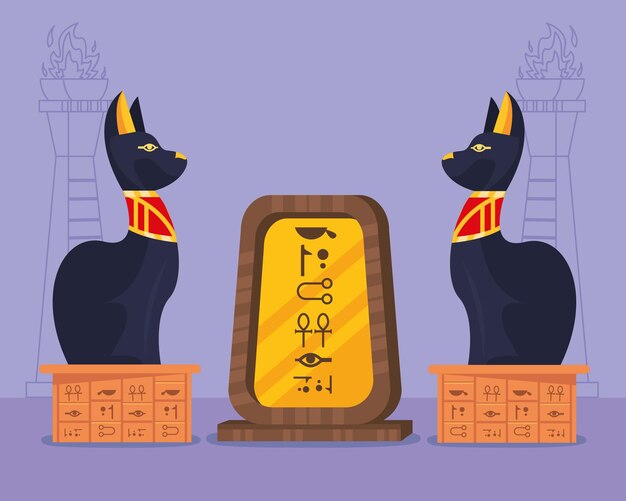Interesting Facts About King Tut

King Tut’s original name was Tutankhaten, which meant the living image of Aten.
King Tut became pharaoh when he was just nine years old.
The famous golden mask of King Tut was discovered in his tomb and is considered one of the greatest treasures of ancient Egypt.
King Tut’s tomb was found in the Valley of the Kings by British archaeologist Howard Carter in 19
5. Despite being a relatively short-lived pharaoh, King Tut has become one of the most famous and recognizable ancient Egyptian rulers.
King Tut’s tomb contained over 5,000 artifacts, including chariots, furniture, and jewelry.
King Tut’s father, Akhenaten, was known for introducing monotheism to ancient Egypt.
King Tut’s mother was likely one of Akhenaten’s wives or concubines, but her identity is still a subject of debate among Egyptologists.
King Tut’s death remains a mystery, with theories ranging from a chariot accident to murder.
DNA analysis conducted on King Tut’s mummy in 2010 revealed that he likely suffered from various health problems, including malaria and a broken leg.
King Tut’s burial chamber contained four nested coffins, each made of solid gold.
The discovery of King Tut’s tomb sparked global interest in ancient Egypt and led to a surge in the popularity of Egyptian-inspired art and design in the 1920s.
King Tut’s reign was relatively insignificant compared to other influential pharaohs, but his tomb’s intact state provided a wealth of information about ancient Egyptian life and culture.
Interesting Facts About King Tut part 2
King Tut’s throne was decorated with carvings of his enemies being trampled under his feet.
The walls of King Tut’s tomb were adorned with intricate paintings depicting various aspects of ancient Egyptian mythology and daily life.
King Tut’s tomb contained several statues of the pharaoh, indicating his significance in the afterlife.
King Tut’s burial mask was made with over 21 pounds of solid gold and inlaid with precious gemstones.
The curse of King Tut, believed by some to bring bad luck or death to those who entered the tomb, gained worldwide attention after multiple people associated with the expedition died mysteriously.
King Tut’s funerary mask was designed to resemble the image of the young pharaoh, with idealized, symmetrical features.
King Tut’s tomb was the most complete and well-preserved ancient Egyptian burial site ever discovered.
King Tut’s tomb contained a pair of golden sandals, indicating his status and wealth.
King Tut’s death mask was initially glued to his mummy’s face with resin, causing some damage during its removal.
King Tut’s burial ritual included the Opening of the Mouth ceremony, which aimed to restore the deceased’s ability to eat, drink, and speak in the afterlife.
King Tut’s golden throne was found broken into pieces, likely due to tomb robbers.
The walls of King Tut’s burial chamber were covered in intricate spells and incantations from the Book of the Dead.
King Tut’s tomb contained a royal boat, which was believed to transport his soul in the afterlife.
King Tut’s burial was originally intended to be in a smaller tomb, but it was quickly adapted and expanded after his unexpected death.
King Tut’s death at a young age and the discovery of his tomb captured the public’s imagination, leading to numerous fictional stories and movies about his life and reign.
King Tut’s tomb contained a treasure trove of information about ancient Egyptian religion, daily life, and burial practices.
King Tut’s tomb was discovered by Howard Carter after years of fruitless searching in the Valley of the Kings.
King Tut’s reign marked a brief return to traditional Egyptian beliefs and practices after the controversial religious changes implemented by his father.
King Tut’s tomb contained two stillborn children, likely his daughters, who were also mummified and buried with him.
King Tut’s golden burial mask is an iconic symbol of ancient Egypt and has become synonymous with the pharaoh’s name.
The discovery of King Tut’s tomb provided crucial insights into the art and craftsmanship of ancient Egyptian artisans.
King Tut’s tomb was filled with preserved food, wine, and other offerings for the pharaoh’s journey into the afterlife.
King Tut’s tomb contained several canopic jars, which held his internal organs after the embalming process.
King Tut’s tomb contained an array of weapons, including bows, arrows, and spears, which were believed to be used in the afterlife.
King Tut’s burial mask was personalized with the pharaoh’s facial features and headdress, complete with a cobra and vulture symbolizing his dominion over Upper and Lower Egypt.
King Tut’s tomb contained a pair of golden gloves, possibly symbolizing his power and authority.
King Tut’s tomb contained a collection of board games, including Senet, showcasing the importance of leisure activities in the afterlife.
King Tut’s tomb was initially overlooked by earlier archaeologists because it was buried under debris from a later pharaoh’s tomb.
King Tut’s golden death mask is considered one of the most famous works of art from ancient Egypt.
King Tut’s tomb revealed the complex process of mummification, with detailed evidence of embalming techniques and rituals.
King Tut’s tomb had multiple chambers, including a treasury, an antechamber, and the main burial chamber.
King Tut’s reign was relatively short, lasting only around nine years, but his tomb’s discovery has fascinated people for nearly a century.

